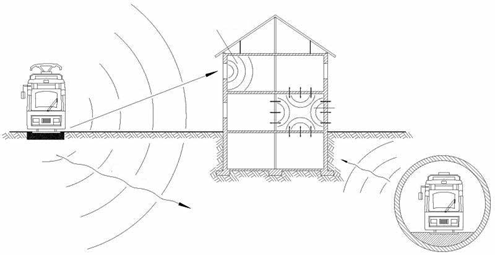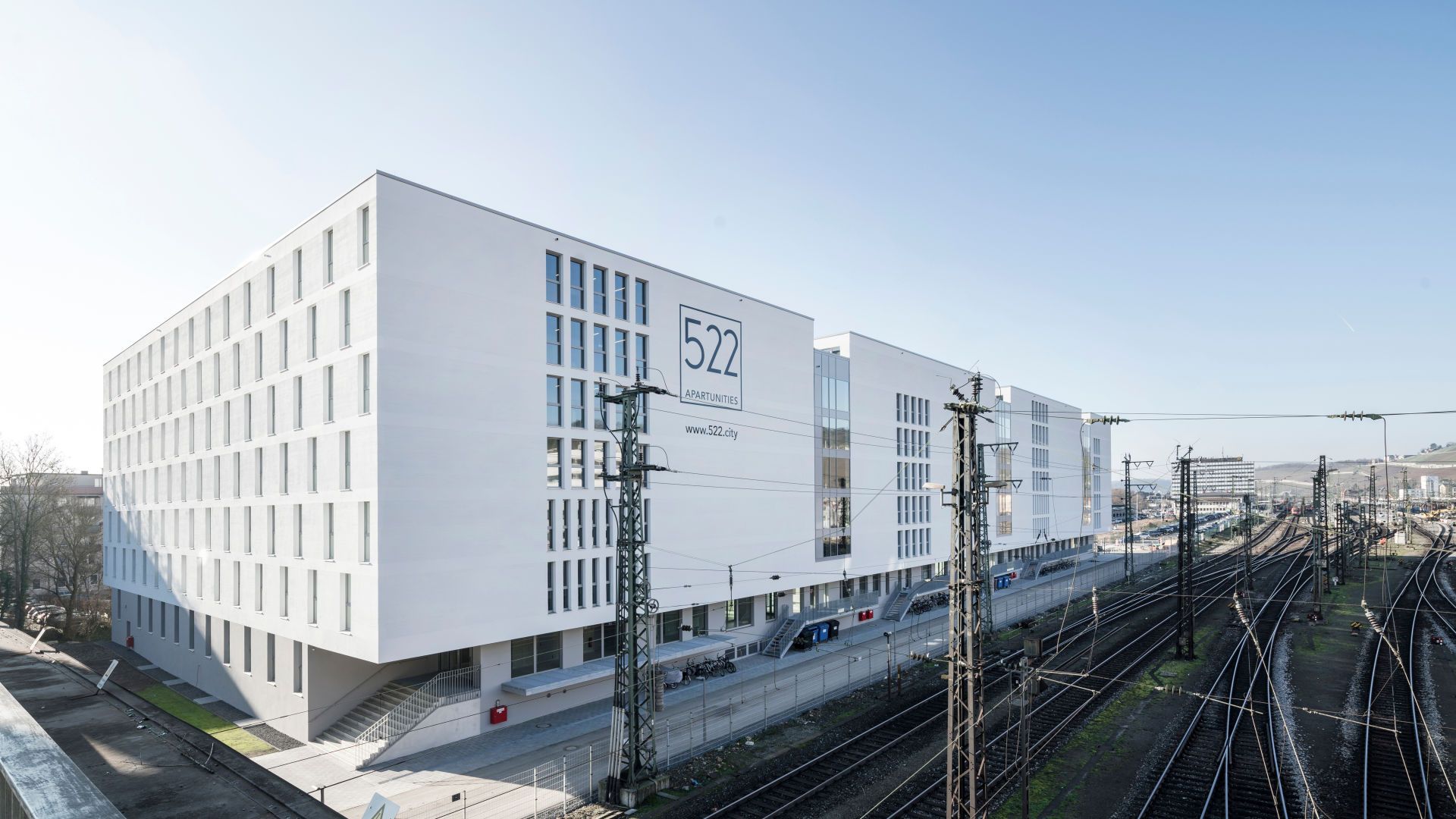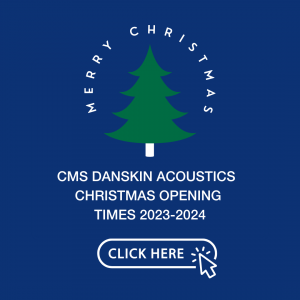Various factors may subject buildings to shock and vibration which can continue through a structure and is perceived by residents in these buildings. Different perceptions of this can be observed, for example, physical vibration – a floor vibrating that is felt under foot. Other effects could be seeing elements vibrating or moving such as light fittings and from these objects we can hear the airborne noise generated. Whilst objects such as walls may not be noticeable to the eye that they are being subjected to vibration, walls will emit what is known as secondary or re radiated airborne noise. An example if this is shown below. Typically, in areas with a dense infrastructure, the vibration source is typically from train or tram lines above or below ground and can also be from industrial sites and road ways.
Why do we protect buildings and people from excessive vibration?
Buildings and structures are protected from vibration sources to ensure both human comfort and health whether that is in a residential setting or a workplace. Also, subject to the magnitude of vibration, this can also cause damage to a building structurally. Typically, these are the things considered by designers such as acoustic consultants and structural engineers when specifying the correct performance required in order to avoid these adverse events.
BS 6472-1:2008 Guide to evaluation of human exposure to vibration in buildings. Vibration sources other than blasting states that intermittent vibration events should not be judged based on perception alone but also using the corresponding vibration dose value (VDV) over a long period.
BS 6472-1:2008 advises that “the VDV defines a relationship that yields a consistent assessment of continuous, intermittent, occasional and impulsive vibration and correlates well with subjective response” and also “the VDV is much more strongly influenced by vibration magnitude than by duration. A doubling of halving of the vibration magnitude is equivalent to an increase or decrease of exposure duration by a factor of sixteen.” HT: 26095/VAR1 25 February 2019 Page 6.
The table below details the Vibration Dose Values (m/s1.75) above which various degrees of adverse comment may be expected in Residential Buildings.
| Time Period | Low probability of adverse comment | Adverse comment possible | Adverse comment probable |
| Daytime (07:00-23:00) | 0.2 to 0.4 | 0.4 to 0.8 | 0.8 to 1.6 |
| Night-time (23:00-07:00) | 0.1 to 0.2 | 0.2 to 0.4 | 0.4 to 0.8 |
In terms of human health, the more commonly known term Hand-arm vibration (HAV) describes when vibration is transmitted to a person’s hand and arm when using power tools, equipment, and machinery. For vibration found in structures which a person could be subject to, this is known as Whole body vibration (WBV). This is when vibration is transmitted to a person’s body through sitting, standing or lying on a surface subjected to excessive vibration exposure through either intensity and/or duration.
WBV can cause health problems, such as:
- back, neck or shoulder pain and conditions
- circulation issues
- fatigue
- head aches
- loss of balance
- motion sickness
- muscular conditions
- respiratory conditions
- sleep and visual disturbances
- stomach and bowel issues and conditions.
Where do we isolate, receiver or source?
In most cases, isolating at source is typically the best way to protect surrounding areas from vibration, so for new trainlines, if in close proximity to existing or planned buildings the track beds may well be treated. However, the most common method would be to isolate the foundations of buildings, as in the UK most of the train infrastructure is in place and with redevelopment in city centers where underground or tram lines might be present, or overground lines on green belt land might be used for new housing developments, foundation isolation is the most common treatment.
The protection of buildings against vibration can be achieved through different measures and the most common way of isolating structures is at the receiver, as train line infrastructure is already in place.
With rail tracks being one of the most frequent causes of structure borne noise and vibration, the majority projects of have disturbing frequencies between 25 and 100 Hz.




